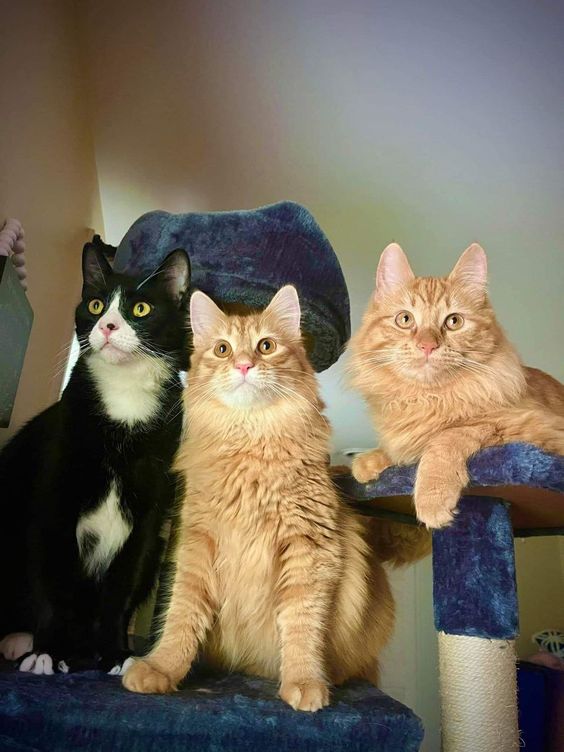
Cat families captivate the hearts of many pet lovers. These feline companions bring joy and loyalty into our lives. In this article, we delve into the intriguing lives and relationships within cat families, uncovering the charming dynamics that make them so endearing.
Social Behaviors and Habits of Cats
Cats are highly social creatures, despite their reputation for independence. Within a cat family, members interact through play, grooming, and protection. Mother cats play a crucial role in teaching and safeguarding their kittens. They use various sounds and gestures to communicate effectively with their young and other family members.
Communication Among Cats
Cats use a combination of vocalizations, body language, and scent markings to communicate. Here are some common methods:
- Meowing: Primarily used by kittens to communicate with their mother. Adult cats usually use meowing to communicate with humans.
- Purring: Often signifies contentment but can also indicate pain or distress.
- Hissing and Growling: Indicate fear, anger, or territorial disputes.
- Body Language: Tail positions, ear movements, and body postures convey a wide range of emotions and intentions.
Types of Cat Families
- Feral Cat Families: Feral cats often live in small groups, typically consisting of a dominant male cat, several females, and their offspring. The dominant male protects the territory and the kittens within the group. Feral cats are known for their resourcefulness and survival skills, often forming colonies near food sources.
- Domestic Cat Families: Domestic cats live with humans and other pets, forming close bonds with family members. They can cohabit peacefully with dogs and other animals, showcasing their adaptable nature. Unlike feral cats, domestic cats rely heavily on human care and interaction, which shapes their social behaviors.

Dynamics in Domestic Cat Families
Domestic cat families exhibit unique dynamics influenced by their environment and human interactions. These dynamics include:
- Adoption: Cats are known to adopt other kittens, showing remarkable care and affection.
- Inter-species Bonds: Cats often form strong bonds with dogs and other pets, creating a harmonious household.
- Routine and Habits: Domestic cats thrive on routine, which helps them feel secure and reduces stress.
Development and Care of Kittens
Kittens are born with many survival instincts and grow rapidly in the first few weeks. The mother cat provides essential care and protection during this period. Caring for kittens involves feeding, keeping them warm, and teaching them necessary survival skills.

Stages of Kitten Development
- Neonatal Stage (0-2 weeks): Kittens are blind, deaf, and completely dependent on their mother. They spend most of their time sleeping and feeding.
- Transitional Stage (2-4 weeks): Eyes and ears begin to open, and kittens start to become more mobile. They begin to explore their surroundings and interact with their littermates.
- Socialization Stage (4-12 weeks): Kittens learn social skills through play and interaction with their mother and siblings. This is a critical period for social development.
- Juvenile Stage (12 weeks and beyond): Kittens become more independent, refining their hunting and play skills. They continue to grow and develop physically and mentally.
Interesting Facts About Cats
- Amazing Jumpers: Cats can jump up to five or six times their body length. This incredible agility is due to their powerful hind leg muscles and flexible spine.
- Sleep Enthusiasts: Cats spend about 70% of their lives sleeping, which amounts to around 13-16 hours a day. This excessive sleeping helps them conserve energy for hunting and playing.
- Communication Masters: Cats have a wide range of vocalizations, including purring, meowing, hissing, and growling, each serving different purposes. They also use body language and facial expressions to convey their emotions.
- Territorial Creatures: Cats are known for their strong territorial instincts, often marking their territory with scent glands located on their face, paws, and tail. This behavior helps them establish boundaries and reduce conflicts with other animals.
- Fast Learners: Kittens quickly learn by observing their mother and siblings, picking up essential skills and behaviors through imitation. This rapid learning process helps them adapt to their environment and increases their chances of survival.
Health and Nutrition in Cat Families
Proper nutrition and healthcare are essential for the well-being of both mother cats and their kittens. A balanced diet ensures that cats receive the necessary nutrients for growth, energy, and overall health.
Nutrition for Mother Cats and Kittens
- Mother Cats: During pregnancy and lactation, mother cats require a diet rich in protein and calories to support their own health and the development of their kittens.
- Kittens: Kittens should be gradually introduced to solid food around 4 weeks of age. A high-quality kitten formula provides the necessary nutrients for their rapid growth and development.
Common Health Issues in Cats
- Fleas and Parasites: Regular grooming and preventative treatments help protect cats from fleas, ticks, and other parasites.
- Dental Health: Dental care is crucial for preventing periodontal disease and other oral health issues. Providing dental chews and regular veterinary check-ups can help maintain good oral hygiene.
- Vaccinations: Keeping up with vaccinations is essential for protecting cats from common diseases such as feline leukemia, rabies, and distemper.
Cat families are a delightful subject to explore, offering a glimpse into the complex and loving relationships within the feline world. Whether feral or domestic, these families exhibit a unique blend of independence and affection, making them fascinating companions. Understanding the dynamics of cat families not only enriches our knowledge but also deepens our appreciation for these beloved pets.

By exploring the behaviors, development, and unique characteristics of cat families, we gain a better understanding of these remarkable creatures. Their ability to form strong social bonds, communicate effectively, and adapt to their environment makes them truly special members of the animal kingdom.

